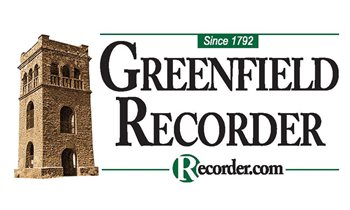Why are teachers unions so important?: The history and functions of unions in our education system

SELWYN Contributed photo/Trish Crapo
| Published: 05-23-2025 10:03 AM |
Teachers unions have been in the news quite a bit recently. They were active in leading the successful action that ended the MCAS as a graduation requirement. They played a leading role in passing the Fair Share Amendment, which imposed an additional tax on the very wealthy to pay for education and transportation. They have been involved with strike actions at several school districts around the state, strikes held over concerns about a wide range of issues ranging from inadequate pay and benefits to concerns about safety and discipline policy, to the need to fully staff with instructional assistants, counselors, and psychiatrists in the wake of COVID.
The roles that teachers unions play are many and complex and poorly understood by those outside (and some inside) education. I will share a bit about the history and role of teachers unions in this month’s column.
The simplest definition of a union is workers joining together to benefit their lives. It does not need to be officially recognized or certified, but if they do want to become recognized and certified they can petition the state to hold an election by the workers. If they win, they can, as a certified union, engage in collective bargaining with their employer.
Workers began forming unions as the industrial revolution picked up steam. Large businesses were exploiting workers, requiring them to work long hours on dangerous machinery for very low wages. The workers had no health care, no job security, and no input about their working conditions. The workers started joining together to increase their power to negotiate and their efforts led to better pay, the eight-hour day (instead of 10 or 12 hours), the five-day work week, health benefits, workplace safety measures, and child labor laws.
The story of teachers unions is a part of that larger story. In the early schoolhouses in Massachusetts, individual teachers were hired by a town or parish, and they were paid little or nothing for their work, and had no job security. Many of those first teachers were men who used teaching as a stepping-stone to better pay and more prestigious employment.
More women entered the profession as the number and size of schools grew. Many of them were still teenagers with only a little bit of education themselves. They were exploited financially and had to follow very strict codes of behavior to remain employed. Here is an example of a contract these young women had to sign:
Teacher contract 1923
Miss [name] agrees:
Article continues after...
Yesterday's Most Read Articles
 Keeping Score with Chip Ainsworth: UMass hockey girds for new campaign
Keeping Score with Chip Ainsworth: UMass hockey girds for new campaign
 My Turn: A rocky road ahead for Stone Farm Lane proposal
My Turn: A rocky road ahead for Stone Farm Lane proposal
 ‘There’s always people you know here’: Bernardston’s Scarecrow in the Park brings community together
‘There’s always people you know here’: Bernardston’s Scarecrow in the Park brings community together
 Speaking of Nature: A surprise in my maple tree: Porcupines just want to find something tasty to eat and be left alone
Speaking of Nature: A surprise in my maple tree: Porcupines just want to find something tasty to eat and be left alone
 Greg Franceschi: Support bike lanes and walking paths in South Deerfield
Greg Franceschi: Support bike lanes and walking paths in South Deerfield
 Lowest bid comes in at less than $6M for Deerfield’s 1888 Building project
Lowest bid comes in at less than $6M for Deerfield’s 1888 Building project
Not to get married. Not to keep company with men. To be at home between the hours of 8 p.m. and 6 a.m. unless at a school related function. Not to loiter downtown at ice cream parlors. Not to leave town without permission from the Chairman of the Board of Trustees. Not to smoke cigarettes. Not to drink beer, whisky or wine. Not to ride in a carriage/automobile with any man who is not her father or brother. Not to wear bright colors. To wear at least two petticoats. Not to dye her hair or to wear makeup of any kind. Not to wear a dress more than two inches above the heel. To keep the schoolhouse clean. [The] fire shall be started at 7 a.m. in order to warm up the room for 8 a.m., when the children arrive. To carry out the ashes at least once a day.
The young women could be fired immediately for violating any element of the contract.
The first union was formed in 1857 by mostly male teachers, with a focus on becoming recognized and respected as professionals, like lawyers and doctors. They identified as a professional association, and their focus was more political and legislative rather than on the classroom.
An increasing number of classroom teachers were women, and they were more concerned with conditions in the classroom, so the men’s union did not speak to them. Margaret Haley, a Chicago public school teacher and leader of the Chicago Teachers Federation, did. She gave a speech at the 1904 NEA conference, “Why Teachers Should Organize,” that spoke of teachers as workers. She said that if students were to become free, democratic thinkers, their teachers must themselves be free, democratic thinkers. She said that teachers’ rights must be respected, their views listened to, and that conditions in the classroom improved. Her leadership helped turn the National Educational Association into an organization that supported women’s equality and for better working conditions for the women and children in classrooms.
Teachers unions continue along those two tracks today, as professional associations focused on keeping teaching standards high, offering opportunities for professional development, and ongoing training, and as unions representing teachers as workers, concerned with the lives and well-being of teachers and students and the conditions of the classroom and schoolhouse. Many of those I spoke with noted that teaching was still largely a women’s profession (approximately 70%), and as is true for most professions largely employing women, such as nursing, child care and social work, they are underfunded, underpaid, undervalued, and the expectation is that the workers will donate their time and often their resources because of their love for the children or the mission. As Deb McCarthy, vice president of the Massachusetts Teachers Association (MTA) put it, “The gender issue is still front and center. Even with our master’s degrees, even with 25 years of experience, we can walk into a legislative hearing and be told by those who have never set foot in a classroom what are best practices. I really was surprised to see the level of disrespect and this treatment of teachers as second-class citizens.”
When asked about the importance of teachers unions, McCarthy said: “An education union understands that our working conditions are our students’ learning conditions. As a collective, we create the solidarity and power necessary to fight for the common good. Without it, we wouldn’t have that first line of defense that is fighting the privatization of public education, and that has sought to reduce our students to a test score for the sake of profit.”
Unions play a crucial role in supporting teachers who have grievances, or who are accused of misconduct. Ann Valentine, president of the Greenfield Teachers Association, emphasizes that the role of the union is to support teachers by standing with them and making sure that educators receive due process, that the proper steps are followed, and that decisions are based on facts and evidence, rather than the whims or animus of an administrator.
Teachers unions also play a significant role on issues that are larger than any one district can take on. Max Page, president of the MTA, notes that teachers unions are playing an active role in defending democracy. He says that austerity is at the base of the struggle. There is not enough money in the educational system, despite the enormous wealth of the state and nation, much of which is held in private hands. The union played a significant role, for example, in passing the Fair Share Amendment, which raised an additional tax on the wealthy to pay for education (and transportation) in the state and is playing an active role in efforts to pass corporate fair share, an action designed to tax corporations that hide their profits offshore.
Unions have played a vital role in growing the economy of the United States, leading to higher wages, higher productivity, less economic inequality, and more social equality in the workplace. Teachers unions have been a significant part of that movement and remain so in our current perilous time for public education, standing up for the mission and quality of schools and for the well-being of our children and the educators who work with them.
Doug Selwyn taught at K-12 public schools from 1985 until 2000 and then at university as a professor of education until he retired in 2017. He is the chair of the Franklin County Continuing the Political Revolution education task force. You can reach him at dougselwyn12@gmail.com.






 ‘The freedom to be silly’: Hilltown Youth Recovery Theatre helps campers heal in mid-air
‘The freedom to be silly’: Hilltown Youth Recovery Theatre helps campers heal in mid-air How to grow a creative community: Meet the eight artists selected for CitySpace’s 2025 Pay It Forward program
How to grow a creative community: Meet the eight artists selected for CitySpace’s 2025 Pay It Forward program The melody lingers on: 85 years later, 102-year-old Montague resident to hear Glenn Miller band again
The melody lingers on: 85 years later, 102-year-old Montague resident to hear Glenn Miller band again Let’s Talk Relationships: The joy of feeling like yourself: Transitioning is about authenticity
Let’s Talk Relationships: The joy of feeling like yourself: Transitioning is about authenticity
